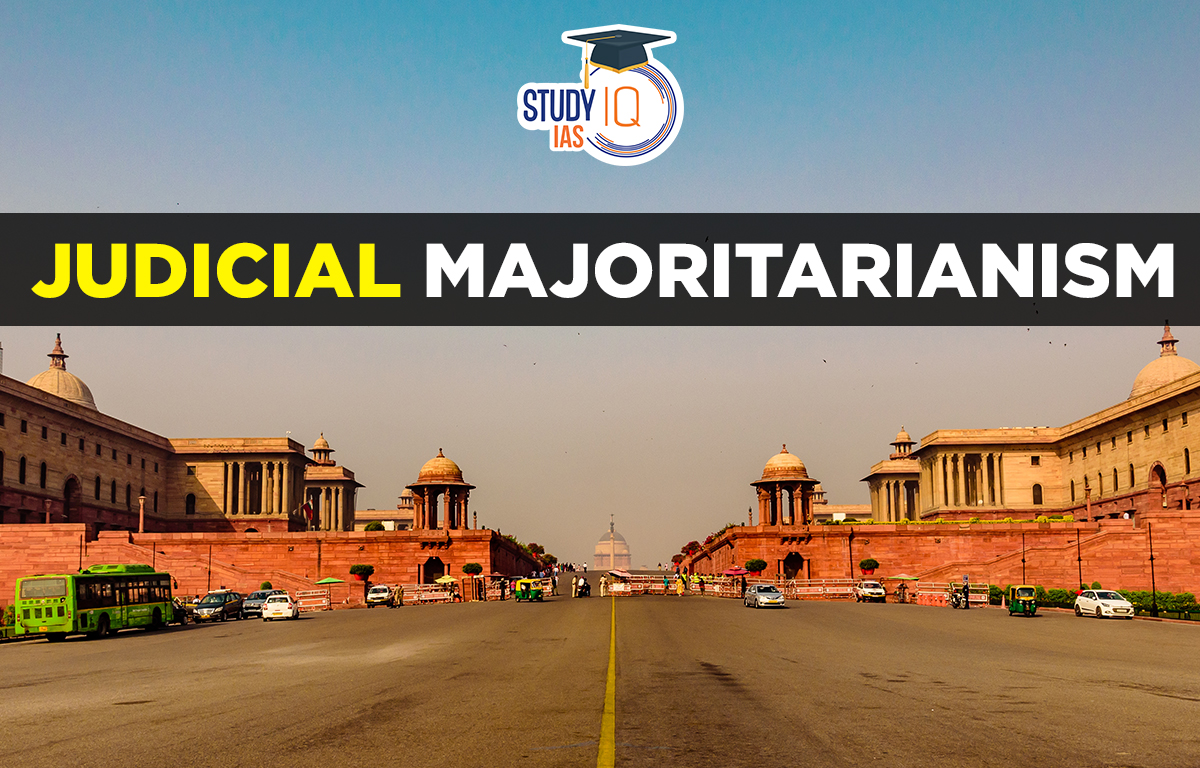Table of Contents
Context: The Supreme Court recently upheld the government’s 2016 decision to demonetise currency notes by a 4:1 majority.
More on the News
- The dissent was given by only one judge in this case who challenged the RBI’s institutional passive acceptance to the Central government.
- The verdict overall started the debate around the blind acceptance of numerical majorities in judicial decision-making that is believed to often lead to constitutional disregard of analysis and appreciation of arguments and evidence in dissenting judgments.
What is Judicial Majoritarianism?
- Usually, the standard matters are heard by Division Benches consisting of two judges.
- However, for cases which involve a substantial interpretation of constitutional provisions, Constitutional Benches are set up.
- As per Article 145(3), Constitutional Benches usually consist of five, seven, nine, 11 or even 13 judges.
- Hence, for such benches, numerical majorities are of particular importance. This is to facilitate decision-making by ensuring numerical majorities in judicial outcomes.
- The requirement for a majority consensus flows from Article 145(5) of the Constitution.
- It states that no judgment in such cases can be delivered except with the concurrence of a majority of the judges.
- This article also states that judges are free to deliver dissenting judgments or opinions.
- Judicial majoritarianism is supported by the following arguments:
- efficiency through ease of decision-making;
- objectivity through majority adherence; and
- equality through fairness.
Reasons why Judicial Majoritarianism is Opposed
- Decision-making based on facts & figures:
- As opposed to representatives of the people in legislatures who may act on hunches or popular perception, judges are experts of law and are aware of the arguments for and against the impugned matter.
- Hence, analysts question why is it that the judges too have to resort to head counting in order to resolve disagreements amongst judges.
- They also raise the question as to why the numerical majorities of judicial bodies are accepted without any debate.
- Gives scope to judicial hunches
- All judges on a particular Bench give their rulings on the same set of facts, laws, arguments and written submissions.
- Hence, any differences in judicial decisions can be attributed to a difference in:
- either the methodology adopted and the logic applied by the judges in their interpretation, or
- their own ‘judicial hunches’ which may be an outcome of their subjective experiences, outlook, perceptions, prejudices and biases.
- In such circumstances, it is entirely possible that the majority may fall into either methodological fallacies and errors or be limited by their ‘judicial hunch’ respectively.
Why Majoritarianism is always not a good option?
- Meritorious minority decision is the casualty
- In the case of judicial majoritarianism, a meritorious minority decision, irrespective of the impeccability of its reasoning receives little weightage in terms of its outcomes.
- E.g., The dissenting opinion of Justice H.R. Khanna in A.D.M. Jabalpur v. Shivkant Shukla (1976) upholding the right to life and personal liberty is a prime example.
- Another example is the dissenting opinion of Justice Subba Rao in the Kharak Singh v. State of U.P. (1962) case upholding the right to privacy.
- The right to privacy received the judicial stamp of approval in the K.S. Puttaswamy v. UOI (2017) case.
- The rate of dissent itself gets affected
- Majoritarianism affects the dissenting voice: A study found that the rate of dissent where the Chief Justice was a part of the Bench was lower than in those cases where the Chief Justice was not on the Bench.
Way Forward
- The absence of a critical discourse on judicial majoritarianism represents one of the most fundamental gaps in our existing knowledge regarding the functioning of our Supreme Court.
- As pending Constitutional Bench matters are listed for hearing and judgments are reserved, we must reflect upon the arguments of judicial majoritarianism on the basis of which these cases are to be decided.


 World Population Day 2025, Themes, Histo...
World Population Day 2025, Themes, Histo...
 What are Polycyclic Aromatic Hydrocarbon...
What are Polycyclic Aromatic Hydrocarbon...
 Marlin Fish: Species, Features, Appearan...
Marlin Fish: Species, Features, Appearan...





















